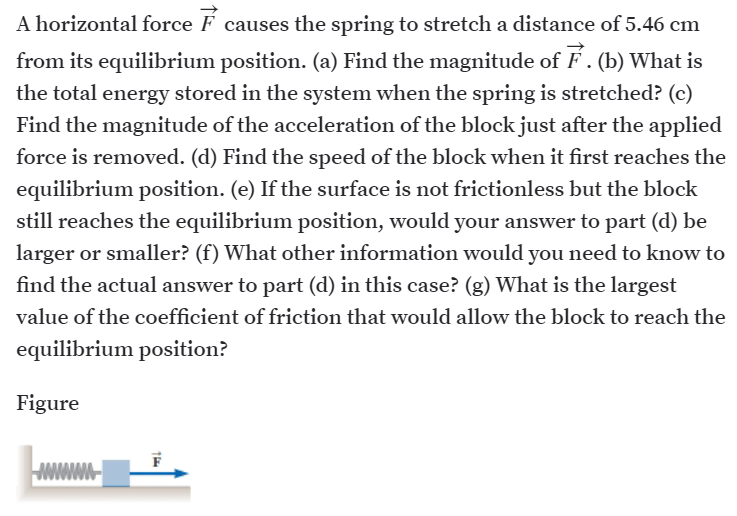A horizontal force F causes the spring to stretch a distance of 5.46 cm from its equilibrium position. (a) Find the magnitude of F. (b) What is the total energy stored in the system when the spring is stretched? (c) Find the magnitude of the acceleration of the block just after the applied force is removed. (d) Find the speed of the block when it first reaches the equilibrium position. (e) If the surface is not frictionless but the block still reaches the equilibrium position, would your answer to part (d) be larger or smaller? (f) What other information would you need to know to find the actual answer to part (d) in this case? (g) What is the largest value of the coefficient of friction that would allow the block to reach the equilibrium position? Figure WWWW-
Simple harmonic motion
Simple harmonic motion is a type of periodic motion in which an object undergoes oscillatory motion. The restoring force exerted by the object exhibiting SHM is proportional to the displacement from the equilibrium position. The force is directed towards the mean position. We see many examples of SHM around us, common ones are the motion of a pendulum, spring and vibration of strings in musical instruments, and so on.
Simple Pendulum
A simple pendulum comprises a heavy mass (called bob) attached to one end of the weightless and flexible string.
Oscillation
In Physics, oscillation means a repetitive motion that happens in a variation with respect to time. There is usually a central value, where the object would be at rest. Additionally, there are two or more positions between which the repetitive motion takes place. In mathematics, oscillations can also be described as vibrations. The most common examples of oscillation that is seen in daily lives include the alternating current (AC) or the motion of a moving pendulum.
A 0.250-kg block resting on a frictionless, horizontal surface is attached to a spring whose force constant is 83.8 N/m as in Figure.

Trending now
This is a popular solution!
Step by step
Solved in 6 steps








